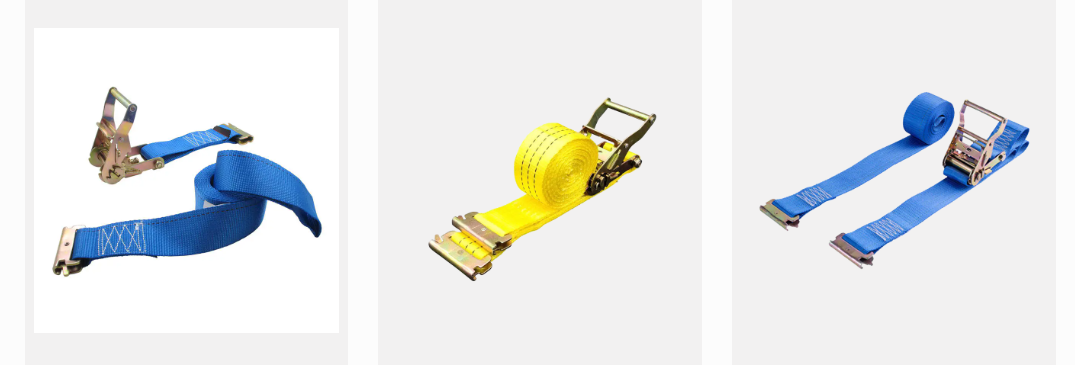2" X15" Ratchet Strap Tie Down 5000lb J Hook
Cat:2 Inch Ratchet Straps
The ingenious ratchet buckle mechanism makes tightening and releasing the strap a breeze. Simply thread the strap through the buckle, pull the webbing...
See DetailsContent
Chain/rope fixing
Complex operation: Need to tie manually or use tools to tighten, which is time-consuming and labor-intensive.
Easy to loosen: Easy to slip off during bumps or sudden braking, and need to be checked repeatedly during the journey.
Damage to goods: Metal chains may scratch the surface of goods, and ropes are easy to wear and break.
Ordinary tie-down straps (no E-track adaptation)
Limited fixing points: Relying on the preset hooks or rails in the carriage, with poor flexibility.
Uneven load bearing: Single-point force can easily cause the tie-down strap to be overloaded and broken.
Seamless cooperation with E-track tracks: Directly plug into the E-track tracks on both sides or the bottom of the carriage, providing multi-point fixation to adapt to different cargo shapes and weights.
360° adjustment angle: Can be tightened horizontally, vertically or diagonally to solve the dead angles that traditional methods cannot cover.
Ratchet mechanism one-touch tightening: It can be automatically locked by pulling the handle, without repeated knotting, and the efficiency is improved by more than 50%.
Quick release: Press the release lever to release the tie, and loading and unloading goods is more efficient.
Evenly dispersed force: E-track track disperses tension to avoid local overload, and can bear up to 5,000 pounds (about 2.3 tons).
Anti-slip and anti-loosening: The ratchet locking mechanism ensures that it does not loosen during transportation, especially suitable for long-distance or rugged road conditions.
Low long-term cost: Although the initial investment is high, the overall cost is lower by reducing the loss of the binding belt and the time for manual inspection.
Material upgrade: High-strength steel or nylon webbing, corrosion-resistant and wear-resistant, with a lifespan of 3 times that of traditional tools.

|
Scenario |
Traditional method |
E-track ratchet tie-down device |
|
Fix large and heavy objects |
Easy to slide, need multiple reinforcements |
Multi-point locking, high stability |
|
Irregular goods |
Difficult to fully cover |
Tighten at multiple angles, no dead angles |
|
High-frequency loading and unloading |
Complicated operation, low efficiency |
Quick disassembly and assembly, improve turnover rate |
|
Long-distance transportation |
Need to check and reinforce midway |
Tighten once, reliable throughout the journey |
Steps:
Check that the webbing is not worn and the hook is not deformed.
Insert the E-track hook vertically into the track slot and rotate 90° to lock it.
After passing the cargo, tighten it gradually with the ratchet handle until it is stable (avoid over-tightening and damaging the cargo).
Note: Make sure the webbing is flat and not twisted, and the hook is completely locked.
Stuck: Tap the ratchet housing to loosen impurities, or drip lubricant to clean the inside.
Loose: Check if the hook is derailed, re-tighten it and confirm that the locking device is effective.
Wear: Replace the webbing regularly (if you find fiber breakage or suture line open).
Temperature range: Polyester webbing can withstand -40℃~100℃, which is suitable for most environments.
Waterproof: Some models are IPX4 certified and can be rainproof, but they need to be dried and stored for long-term moisture.
Anti-corrosion: Choose stainless steel hooks or galvanized materials to cope with corrosive environments.
Cleaning: Wipe dirt with a damp cloth to avoid chemical solvents corroding the webbing.
Storage: Keep in a cool and dry place, away from UV rays (anti-aging) and sharp objects.
Regular inspection: Test the ratchet function and webbing integrity every quarter.